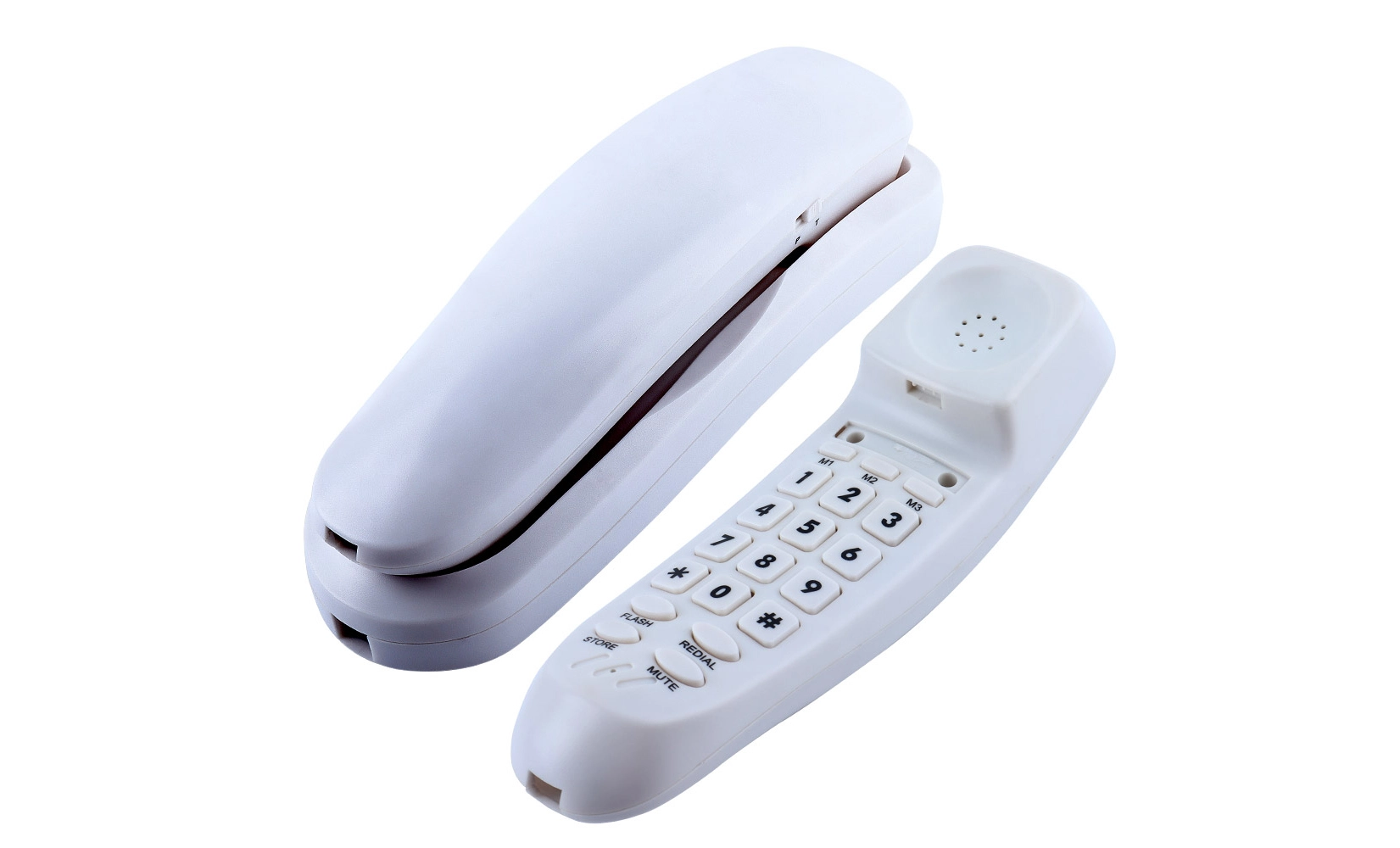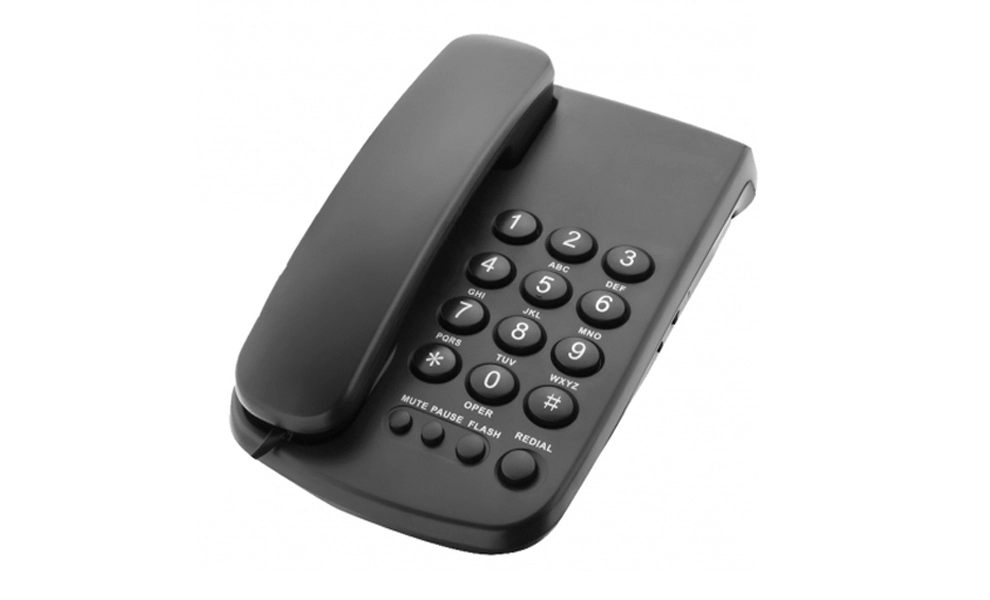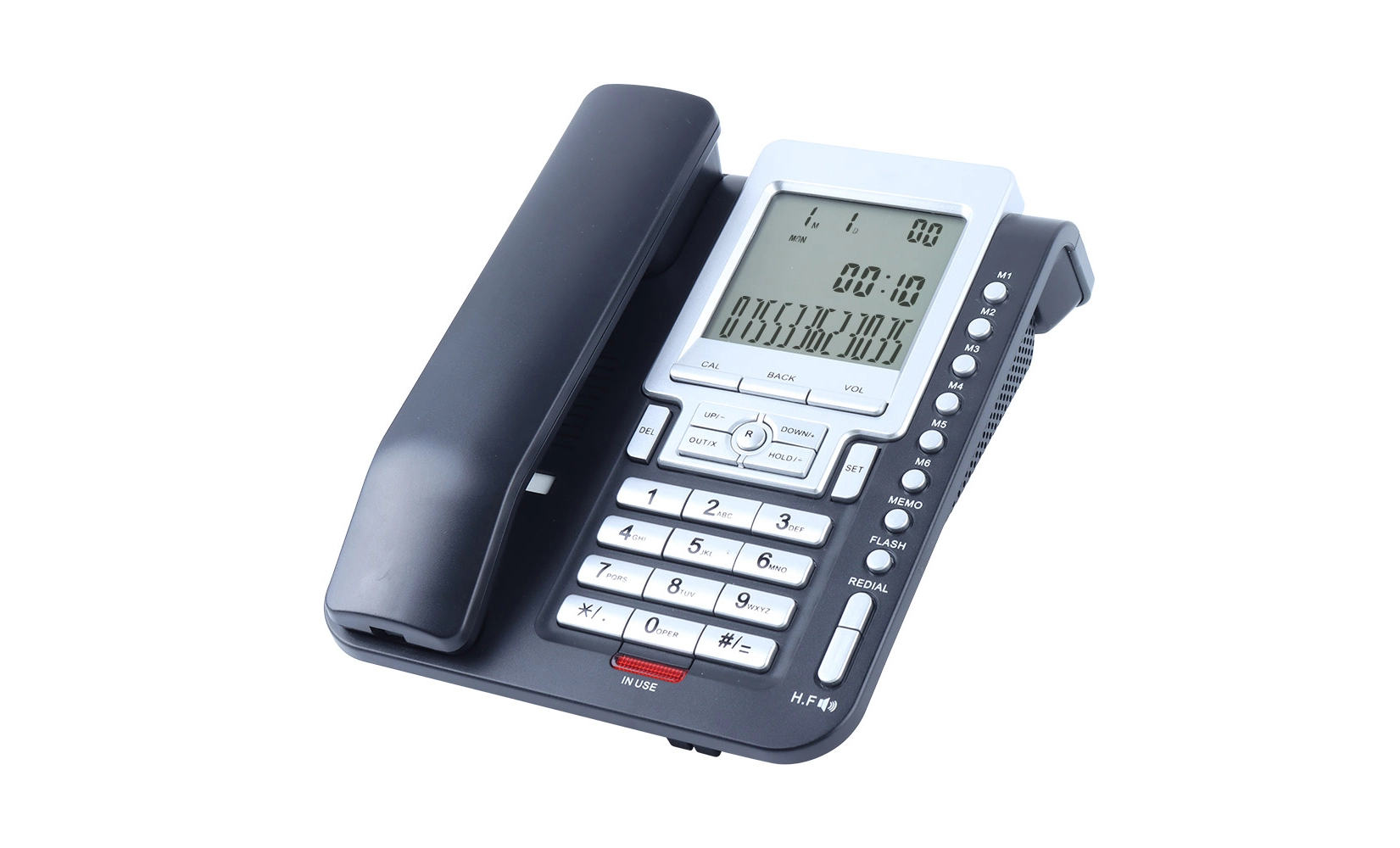Understanding Trimline Telephones: Features and Benefits
What Makes a Trimline Telephone Unique?
Trimline telephones have carved out a distinct niche in the world of landline communication devices. These sleek, compact phones are characterized by their slim profile and integrated handset design, where the dial pad is built into the handset itself. This innovative configuration was first introduced in the 1960s and has since become a popular choice for those seeking a space-saving, functional telephone option.
The primary advantage of a trimline telephone lies in its efficient use of space. Unlike traditional desk phones with separate base units, trimline models combine all essential components into a single, streamlined device. This design makes them ideal for wall mounting or placement in areas where space is at a premium, such as small bedside tables, narrow hallway consoles, or compact kitchen counters.
Key Features to Look for in a Modern Trimline Phone
While the basic concept of trimline telephones remains true to its origins, modern versions have incorporated various features to enhance functionality and user experience:
- Lighted Keypad: Many contemporary trimline phones feature illuminated buttons, making dialing easier in low-light conditions.
- Memory Functions: Look for models offering one-touch or speed dial options for frequently called numbers.
- Adjustable Volume Controls: This feature allows users to customize both ringer and earpiece volume levels.
- Hearing Aid Compatibility: Essential for users with hearing impairments, ensuring clear audio transmission.
- Last Number Redial: A convenient feature for quickly redialing the most recent outgoing call.
- Mute Function: Allows users to temporarily disable the microphone during a call.
- Visual Ringer Indicator: Helpful for those who may not always hear the phone ring.
The Ergonomic Advantages of Trimline Telephones
The ergonomic design of trimline telephones offers several benefits for users. The integrated handset and keypad allow for comfortable one-handed operation, reducing strain during extended conversations. The lightweight nature of these phones makes them easy to handle, particularly beneficial for elderly users or those with limited mobility.
Moreover, the wall-mountable feature of many trimline models contributes to better posture during use. By eliminating the need to hunch over a desk phone, users can maintain a more natural position while on calls, potentially reducing neck and shoulder strain associated with prolonged telephone use.
Factors to Consider When Choosing a Trimline Wall Telephone
Assessing Your Space and Installation Requirements
Before selecting a trimline wall telephone, it's crucial to evaluate the available space and installation options in your home. Consider the following:
- Wall Space: Measure the area where you plan to mount the phone. Ensure there's sufficient clearance for the handset and cord.
- Proximity to Phone Jack: Check the location of your nearest phone jack. You may need an extension cord if the desired mounting spot is far from the jack.
- Mounting Hardware: Verify that the phone comes with necessary mounting brackets or plates. Some models may require additional hardware for secure installation.
- Cord Length: Assess the cord length to ensure it's sufficient for comfortable use in your chosen location.
Evaluating Sound Quality and Volume Control
Sound quality is paramount for any telephone, and trimline models are no exception. Look for phones that offer:
- Clear Audio Transmission: Opt for models known for their crisp, clear sound reproduction.
- Adjustable Earpiece Volume: This feature is crucial for adapting to different user preferences and hearing abilities.
- Customizable Ringer Settings: Multiple ringer volume levels and tone options help ensure you never miss a call.
- Noise Reduction Technology: Some advanced models incorporate noise-canceling features for improved call clarity.
Durability and Build Quality Considerations
A well-constructed trimline telephone should withstand years of regular use. When assessing build quality, consider:
- Material Composition: Look for phones made with high-quality, impact-resistant plastics or other durable materials.
- Button Durability: Ensure the keypad buttons are sturdy and responsive, capable of withstanding frequent use.
- Cord Quality: Check that the handset cord and wall cord are flexible yet robust, resistant to tangling and wear.
- Wall Mount Stability: For wall-mounted units, verify that the mounting mechanism is secure and stable.
By carefully considering these factors, you can select a trimline wall telephone that not only meets your functional needs but also integrates seamlessly into your home environment, providing reliable communication for years to come.
Advanced Features and Compatibility Considerations
Exploring Enhanced Functionality in Modern Trimline Phones
While trimline telephones are known for their simplicity, many modern models incorporate advanced features that significantly enhance their functionality:
- Caller ID Display: Some trimline phones now include small LCD screens for displaying caller information, a feature particularly useful for screening calls.
- Call Waiting Compatibility: Ensure the phone supports call waiting features if your telephone service includes this option.
- Speakerphone Functionality: While not common in all trimline models, some offer hands-free calling capabilities.
- Intercom Systems: For homes with multiple extensions, look for models that support intercom functionality between handsets.
- Phonebook Storage: Digital phonebook features allow for storing and easily accessing frequently called numbers.
Ensuring Compatibility with Your Home Phone System
Before finalizing your choice of a trimline wall telephone, it's essential to verify its compatibility with your existing home phone system:
- Analog vs. Digital Lines: Most trimline phones are designed for traditional analog lines. If you have a digital phone system or VoIP service, ensure the phone is compatible or consider necessary adapters.
- Pulse or Tone Dialing: While most modern phone systems use tone dialing, some older systems still use pulse dialing. Look for phones that offer both options for maximum flexibility.
- Power Requirements: Traditional trimline phones typically don't require external power sources. However, models with advanced features like caller ID may need battery power or AC adapters.
- Extension Compatibility: If you plan to use multiple phones on the same line, ensure they can function correctly as extensions without interfering with each other.
Accessibility Features for Special Needs
When selecting a trimline telephone, consider any specific accessibility needs:
- Hearing Aid Compatibility: Look for phones labeled as hearing aid compatible to ensure clear sound for users with hearing aids.
- Large Button Designs: For users with visual impairments or dexterity issues, models with oversized buttons can greatly improve usability.
- Voice Amplification: Some models offer additional amplification for users with hearing difficulties.
- Visual Ring Indicators: Bright, flashing lights that accompany the ringer can be helpful for those with hearing impairments.
- Ergonomic Handset Design: Consider phones with specially designed handsets that are easier to grip and hold for extended periods.
By carefully considering these advanced features and compatibility factors, you can select a trimline wall telephone that not only meets your basic communication needs but also provides additional functionalities that enhance your overall user experience. Whether you prioritize simplicity or desire more advanced capabilities, there's likely a trimline phone model that fits your specific requirements and integrates seamlessly into your home communication setup.
Conclusion
Choosing the right trimline wall telephone for your home involves carefully balancing functionality, design, and personal needs. By considering factors such as space requirements, sound quality, durability, advanced features, and compatibility with your existing phone system, you can make an informed decision that enhances your home communication experience.
Remember to prioritize features that align with your specific usage patterns and any special accessibility needs. A well-chosen trimline telephone can provide reliable, clear communication while complementing your home decor and maximizing space efficiency. With the wide range of options available in today's market, you're sure to find a trimline wall telephone that perfectly suits your home and lifestyle.
Choose factory-direct trimline phones with warranty | CHEETA
Shenzhen Cheeta Technology Co., Ltd. stands out as a premier manufacturer of analog telephones, boasting over 18 years of expertise in OEM/ODM services. Our expansive 1,200㎡ facility, staffed by 100+ skilled workers and 10 senior engineers, ensures a daily production capacity of 1,000 analog units for prompt delivery. We pride ourselves on maintaining rigorous quality standards, with all products adhering to CE and ROHS certifications. Our meticulous 11-step inspection process guarantees long-term reliability, resulting in an impressively low failure rate of less than 1%.
At CHEETA, we offer comprehensive OEM/ODM customization options, leveraging our blend of engineering prowess, automation, and rapid response capabilities to meet the diverse needs of global buyers. Our commitment to innovation is evident through weekly development sessions and continuous feature refinement based on real-world user data. For more information about our cutting-edge telephone products, please contact us at allen@cheeta.com.cn.





